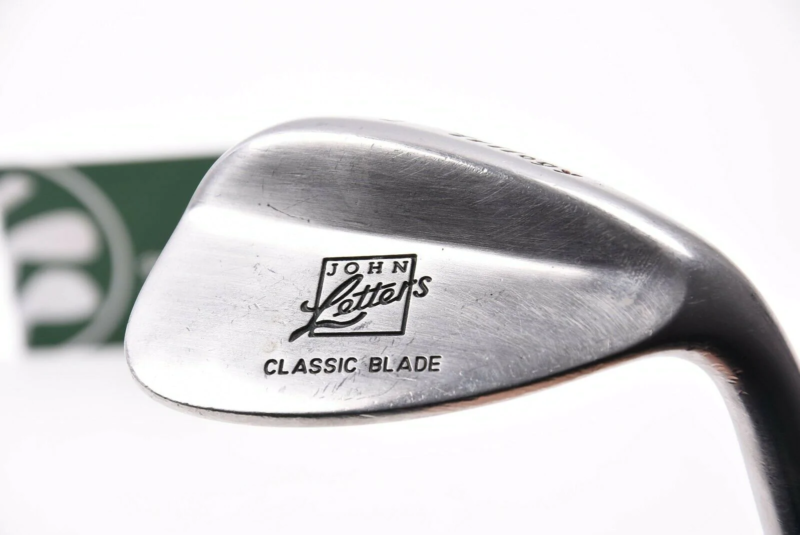52 vs 56 Degree Wedges: What are the Differences?
Wedges are a type of golf club designed for short-range shots, typically 100 yards or less from the green.
They are used in various situations during a game, such as approach shots, bunker play, and chipping around the green.
Having the right set of clubs in your bag can greatly affect your performance on the course.
And when it comes to wedge play, choosing the right club can make all the difference.
The 52-degree and 56-degree wedges are two popular options in the golf community.
And while these clubs may look the same, they are quite different and tend to affect golfers differently.
Whether you’re a beginner or a pro player, understanding the subtle differences between these clubs can help you make better decisions on the course, thereby improving your game performance.
This article will discuss the 52 and 56 degree wedges and how they impact your short game around the green.
Overview: How do they Differ?

A 56-degree wedge is usually categorized as a sand wedge. It’s designed to help golfers get out of bunkers and thick rough around the green.
It’s also useful for flop shots and other short-game shots that require a high trajectory and a lot of spin.
A 52-degree wedge, on the other hand, is categorized as a gap wedge or a pitching wedge, depending on the loft of the golfer’s other clubs.
A gap wedge is used to fill the distance between a pitching wedge and a sand wedge, while a pitching wedge is used for approach shots to the green from 100-120 yards out.
It’s important to note that the loft of the wedge can vary slightly, depending on the manufacturer.
So the specific category of a 52-degree or 56-degree wedge may differ depending on the club.
Loft and Bounce
One of the main differences between the 52 and 56-degree wedges is their loft angle.
The 52-degree wedge has less loft than the 56-degree wedge, meaning it’ll hit the ball lower with less spin.
This makes it a good option for approach shots from the fairway or when the ball is sitting on a tee.
In contrast, the 56-degree wedge has more loft than the 52-degree and will hit the ball higher, with more spin.
The 56 makes an ideal club for shots around the green, bunker play, and flop shots. The difference in loft also means that they will travel different distances.
The 52 will be able to hit the ball farther due to its lower loft angle, making it a good club for full swings from the fairway.
The 56’s higher loft angle is best suited for shorter shots that require more loft and spin to stop the ball quickly on the green.
Distance and Trajectory
The 52 and 56-degree wedges are quite different when it comes to the distance and trajectory they give to a ball.
The 52 is better for longer shots and full swings, while the 56 makes an ideal club for shorter shots on the green.
This is mainly due to the difference in their loft angle, as a club with a lower loft angle covers more distance than a club with a higher loft angle.
Player Skill Level and Preference
When player skills are being considered, beginners and handicapped players usually find the 52-degree wedge more suitable for them.
While the 56-degree wedge seems more fitting for intermediate to advanced players.
Selecting a club is usually determined by the individual’s preference.
For precise shots, some players may enjoy the control and sensation of a 56-degree wedge. Whereas others may have a preference for the extended range and more level trajectory of a 52-degree.
Golfers must evaluate a variety of wedges to decide which ones best fit their game.
Preferably, a golfer’s set of clubs should have both a 56-degree and a 52-degree wedge.
This can increase their chances of success on the course by opting for the most suitable club for the situation and recognizing the differences between the two.
Final Thoughts: Go for 52 or 56?
The 52 and 56-degree wedges are two versatile clubs that significantly impact a golfer’s short game.
Although they may seem similar, they each have their differences.
For example, a flop shot requires the ball to be hit high into the air and stop dead on the green, for which a 56-degree wedge is suitable.
But for a chip shot where the ball flies and still rolls out, the 52-degree wedge is a better choice.
It’s important for golfers to consider the course conditions, their skill level, and their preferences when selecting the right wedge for their game.
With practice and experimentation, they can master their wedge play and improve their short game.
Related Posts:
- Tensei White vs. Blue: Are They Different?
- Srixon Q Star Vs. Z star: Full Comparison
- Titleist u500 Vs. u510: Comparison

Want to Get Better at Golf?
Get "Ben Hogan's Five Lessons" and join thousands of others improving their golf skills.
Learn the Fundamentals: Stance and Posture > Golf Grip > The Swing.
This book has LOADS of positive reviews. THOUSANDS OF REVIEWS. A MILLION COPY SOLD. CHEAP!
Get the Book Here
